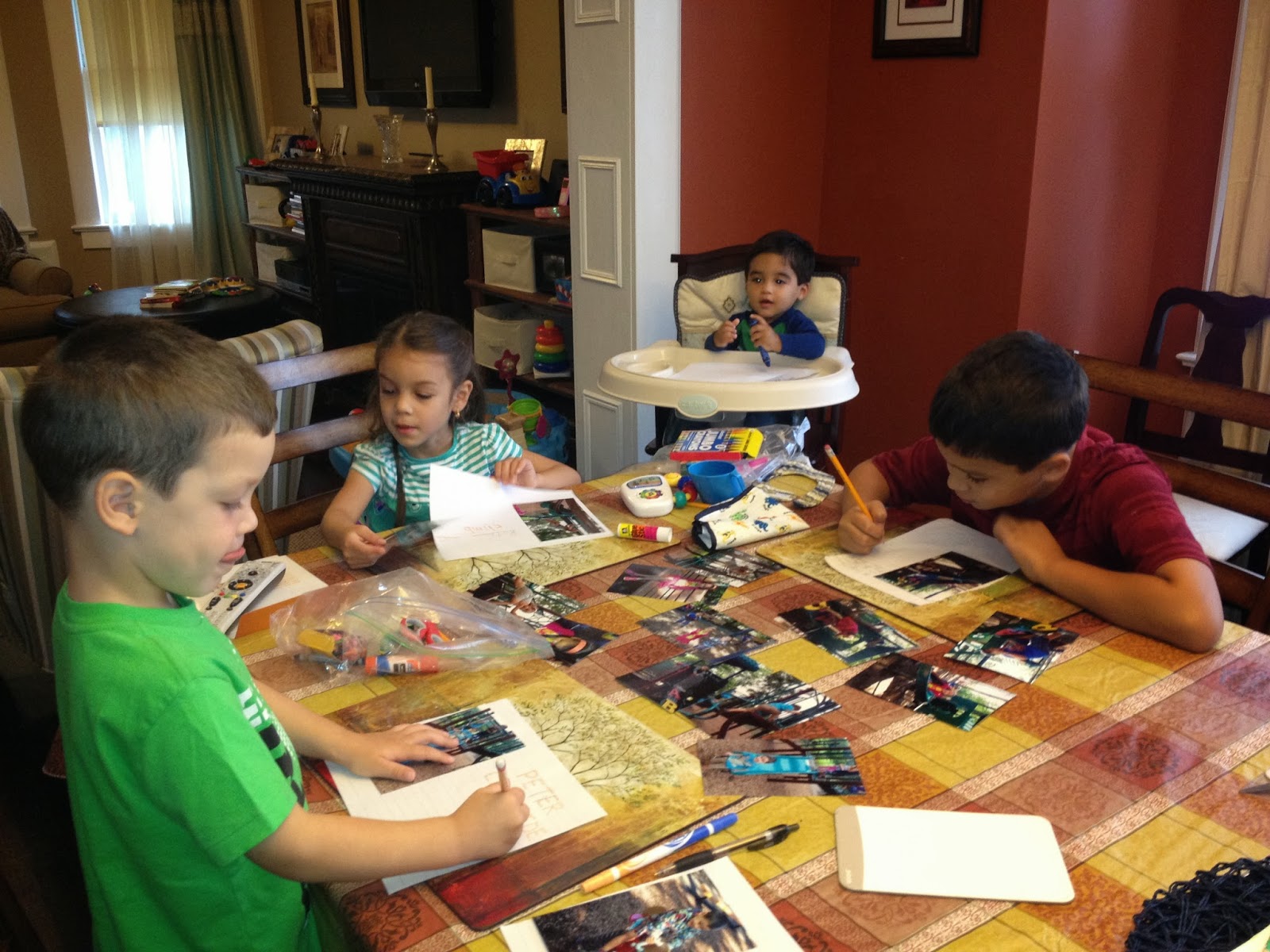I was recently getting some tips from a Speech and Language Pathologist that
I admire. I was looking for ways to support my son's oral
development. I had some concerns that my son's speech was not progressing
as it should. While there are no outstanding red flags I am a huge
believer is collecting ideas and trying them. Why not support things
where I can?! Anyhow, Antonella Scofield (www.words4all.com) provided
loads of helpful low-stress tips. One of them was to work on sounds with
my son. She reminded me that sounds are just as much progress in speech
as are actual words. I immediately connected to Old McDonald's Farm, I
couldn't believe that I had forgotten to teach this song to my child! HOW COULD
I???!!!!! After a few seconds of beating myself up I took a breath and
extracted myself from that hook that we parents often put ourselves on by
ourselves. After all, I am *trying* to raise my son bilingual and it
means that sometimes I trade some English classics for Spanish ones. Instead
of focusing on what I hadn't done I decided to think about what I could
do. Now teaching your child animal sounds is by no means an Earth
shattering new idea. It is practically its own chapter in the mommy
handbook right? Right after you must make choo choo sounds with the spoon while
feeding...oh you forgot that one too? Right there with you! All excited about
my new adventure I started thinking about how we teach our kids new things and
I remembered the magic of three. You know all the sayings right-
"third time's the charm", "three cheers for", "three
strikes you're..." oh wait that last one is a bad example. But you
get it.
Antonella's suggestion that I nurture sounds reminded me that animal sounds
were a great way to bridge some language skills for my child's bilingual
world. After all, my cow and "vaca" both say moo no matter what Google translation may think. I decided to attack this new learning in at
least 3 ways. Not only did I (finally) remember to teach Old McDonald to
my son which support his learning through song, I also found a book (The Very Busy Spider's Favorite Words) that supported the visual of the animal when we made
the sound. Thirdly, we would be sure to make the sound as we played with
his animal puzzle where he got to hold the various animals. I couldn't
believe how quickly this helped my son feel comfortable making these
sounds. He feels so proud- as do we. This, along with Antonella's
other suggestions are already helping my son's speech grow each
day.
The power of 3 though is a thread that can be applied in many ways as we look
to nurture our children's development. As a teacher I am always looking
to approach learning from a multi-sensory lens. Having this fresh
reminder of three is so useful at the beginning of the year. As I am
working with my Kinders on letters and sounds I shared the idea of learning
something new in 3 ways with them. They were so excited to practice our
alphabet poster with a song (accessing sound), a motion (physical), and words
in a book (visual). Now having this type of multi-sensory approach is a
foundational skill in teaching. Many teachers apply it in their work,
however, it is a great reminder to carry for any new learning. I like the
idea of 3 because if you try to hit every lesson using every type of sensory
approach you will probably feel frustrated and overwhelmed but 3 approaches is
manageable. This is something we can do for our kids and ourselves.
When we want to lose weight for example aren't nutrition, exercise, and sleep
the magic formula? Yeah you're right another bad example!
Raise the FLF: I used this approach to teach a
concrete skill like animal sounds but you could do this with any learning as a
family. For example, if you have a child that is struggling with
perfectionism (I have had several students with this issue even in the youngest
grades) you can help you child by supporting them in three ways: let them tell
you about their experience (verbally express themselves), share a book from the
library or guidance counselor (hear the stories of others), and explicitly show
them examples AS you make your own mistakes (modeling). "See how I
tried to have everything ready for breakfast today but I forgot half the things
on my shopping list? I feel so frustrated by that but I'm going to have to
figure out how to make it work because we have to get going on our
day." Any new learning or concepts you want to bring in the family
can be better supported by attacking it from three angles. Can you
imagine any ways this might work for you?



